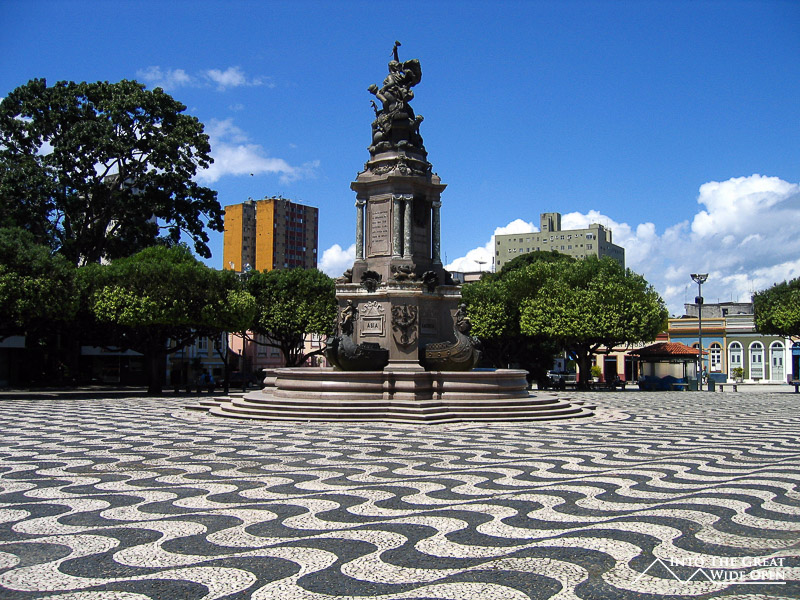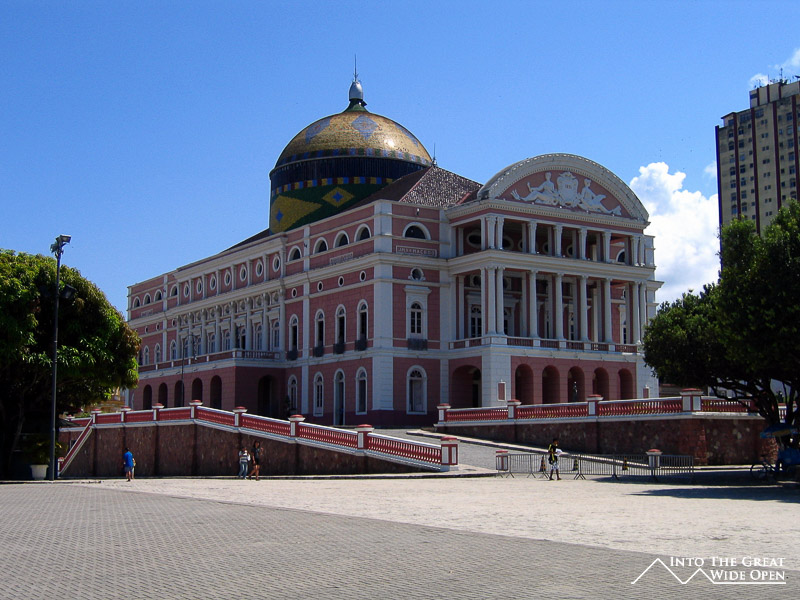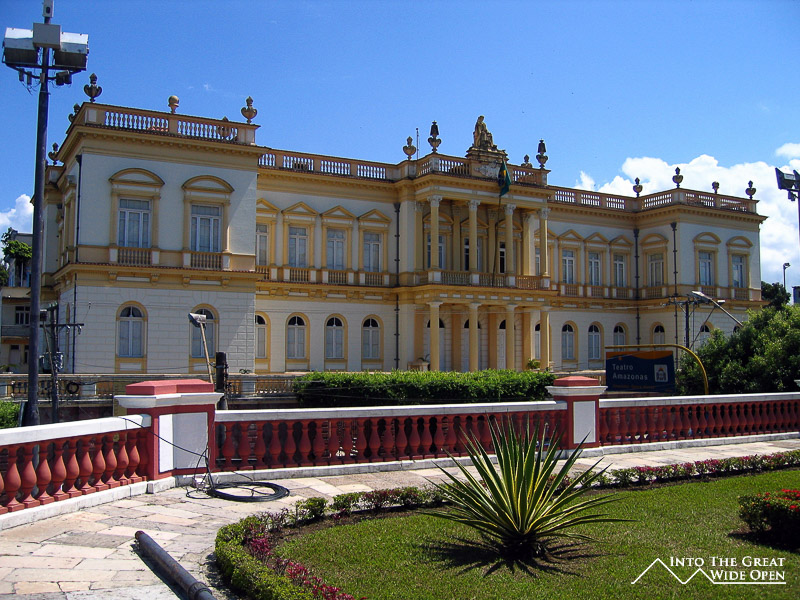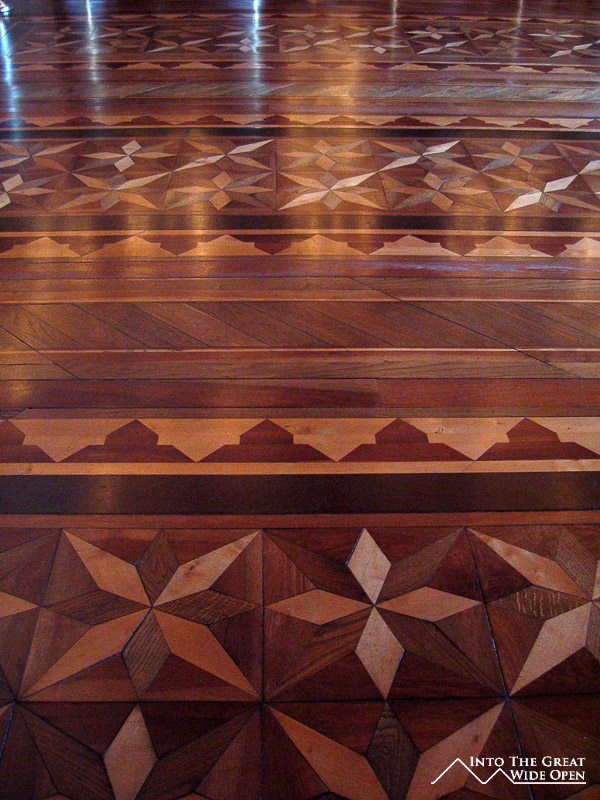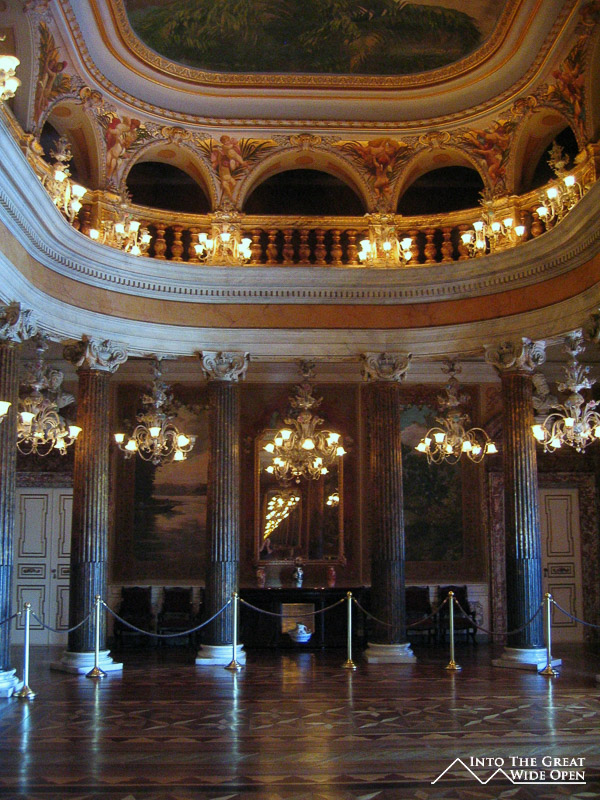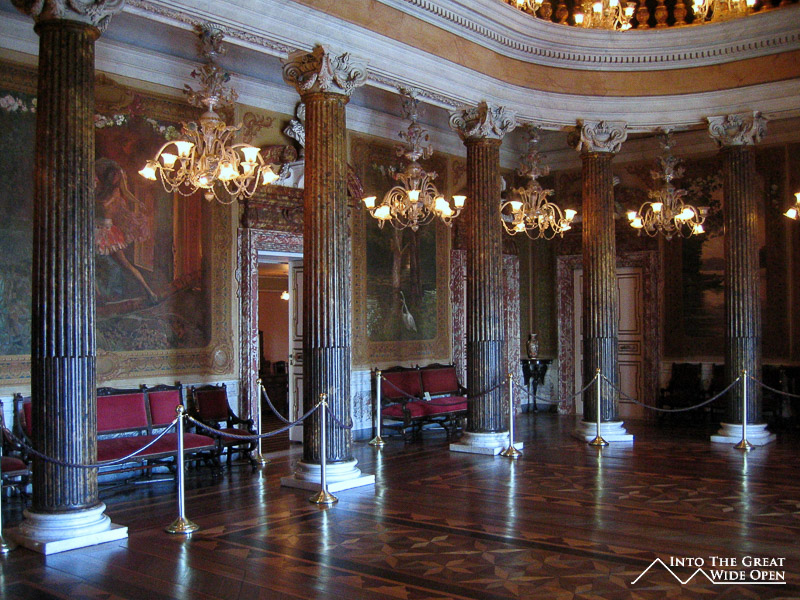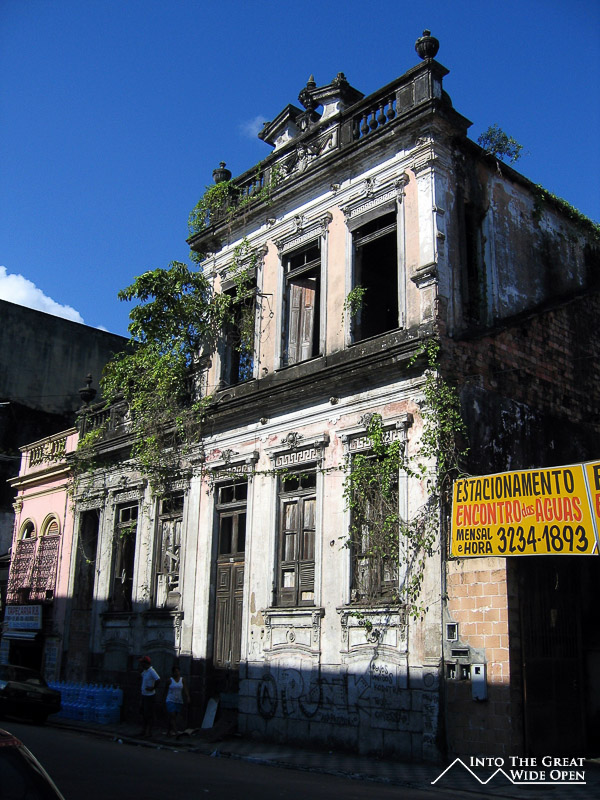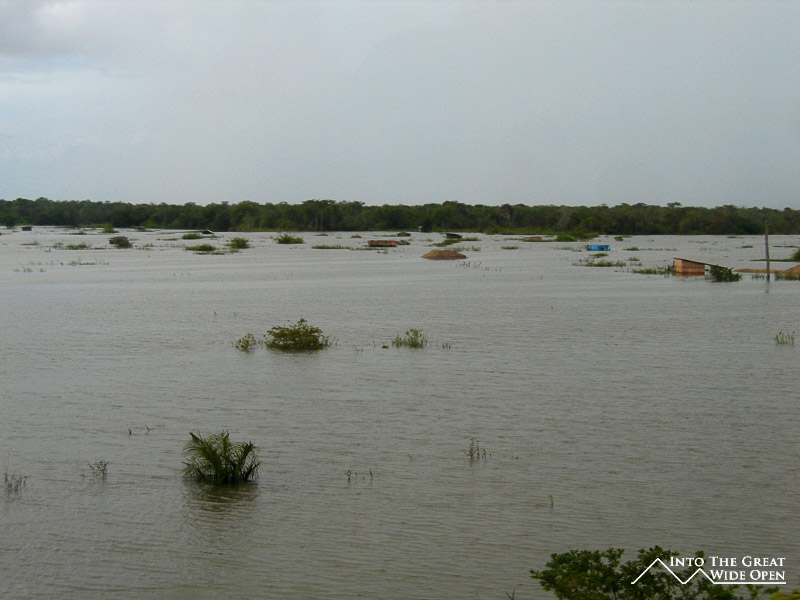Manaus, Brazil
The Amazon
June 29, 2008
Forget your lust for the rich man's gold
All that you need is in your soul
And you can do this if you try
All that I want for you my son
Is to be satisfied
- Lynyrd Skynyrd

Manaus is a city of over one million people located right in the center of the Amazon. Although this would seem to conjure up images of a city nestled within the jungle, Manaus is in fact a hot sprawling urban center devoid of any semblance of the surroundings that have been cleared for its existence. Within the city there is little of touristic merit and the city seems to serve mainly as a springboard for trips to visit other, more natural parts of the Amazon.
The centerpiece of the city is the Teatro Amazonas, an opulent opera house that has been restored several times and features numerous rainforest woods and local materials in its construction. The main hall of the opera house is rather small but there are four or five levels of seating in a U-shape around the stage. There are some nice paintings on the walls and ceilings and some of the intricate wood floors that have been assembled from different types of wood are very impressive.

Around the city there are various old buildings, some in much better shape than others, that give a good impression of what the city may have been like in the past. The main market is an old marketplace modeled after the markets in Paris but has since fallen into disrepair and was currently being renovated. Outside of the city there is the meeting of the waters, the beginning of the Rio Amazonas marked by the confluence of the dark colored waters of the Rio Negro and the muddy brown waters of the Rio Solimoes, where the two rivers flow side by side without mingling for about a kilometer. In the dry season there are also some beaches on the river that can be visited but now in the wet season, these are mostly underwater, with the water level of the river having risen by 12 meters, submerging most of the riverbanks and the jungle habitats.

It is so miserably hot and humid during the day in the sun that I don´t know how you could sit on the beach anyways. The heat and humidity probably wouldn´t be so bad if it ever cooled off, but it never does. Even in the middle of the night it feels just as hot as it does during the day in the shade, and without air conditioning there is no break from the oppressive heat. The tours that are offered from Manaus are rather expensive, costing about 150 reals a day, and they all seemed to offer similar itineraries to what I had already done in Bolivia. With the high water levels reducing the amount of wildlife to be seen, I decided to pass on these tours and instead visit the pristine tropical rainforest in Guyana on my way to Venezuela. The one trip, although more like an expedition, that sounded really great is the trip to Pico de Neblina, the highest mountain in Brazil located in a remote section of the country near the Venezuela border. The trip takes about fifteen days and costs a few thousand dollars, consisting of several days of river travel and hiking, passing through native villages before arriving at the top of the mountain. Sadly this was well beyond my budget but perhaps someday….
With little else to do in Manaus but sweat in the heat, I couldn´t get out of the city soon enough, heading north by road to Boa Vista on my way to Guyana.




